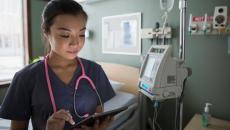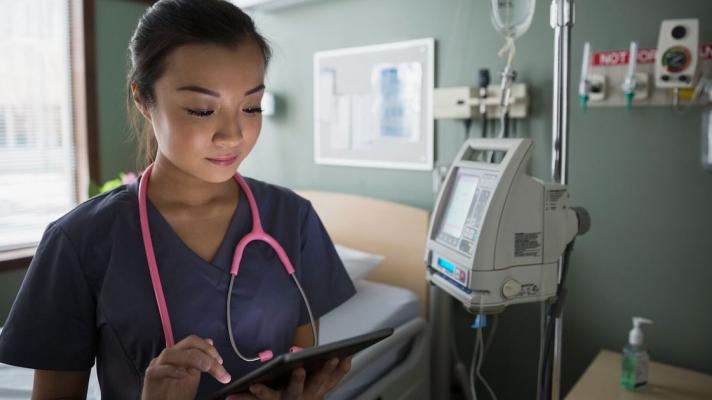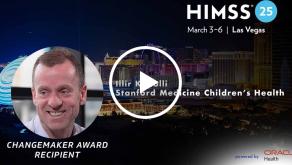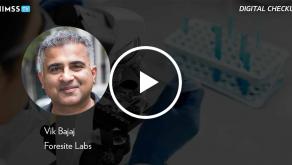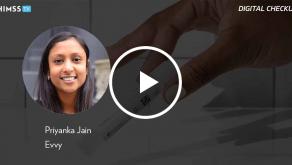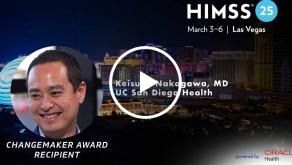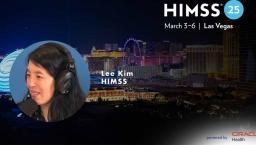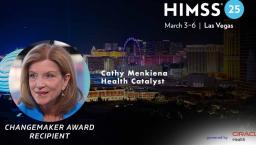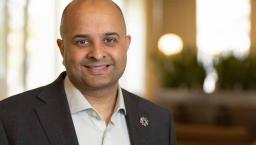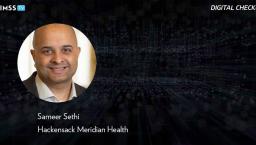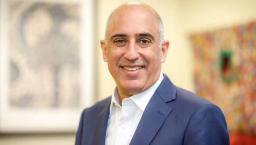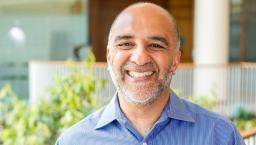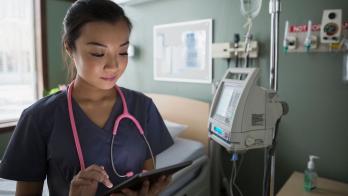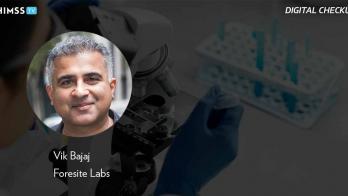New cardiac device offers noninvasive diagnosis for heart failure in the home
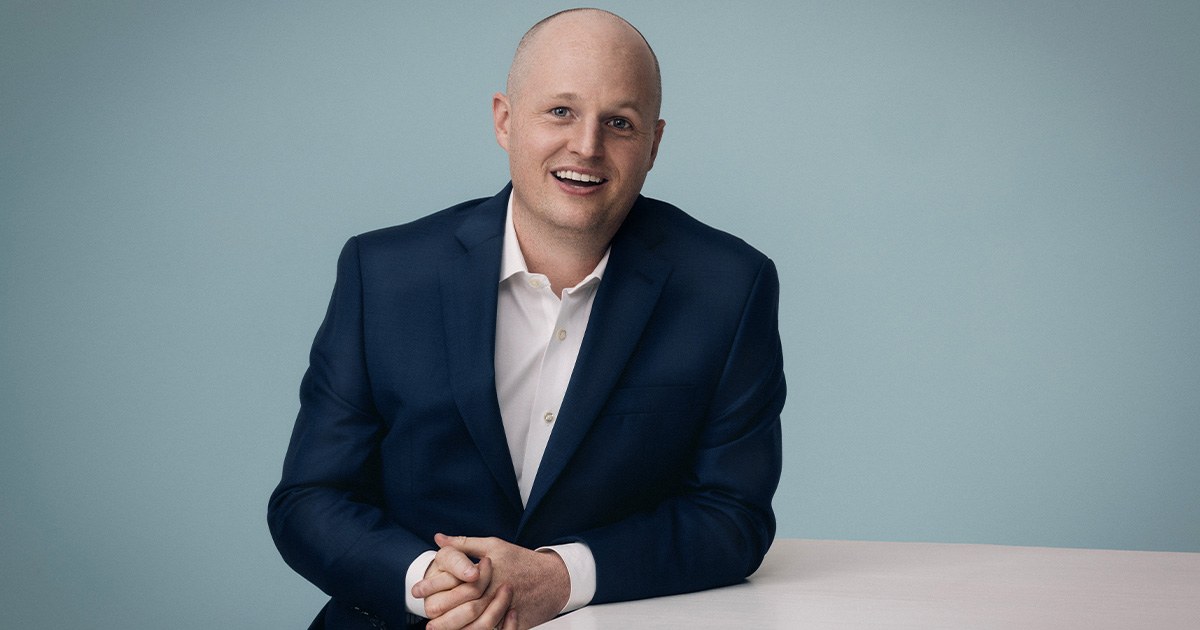
Sean Brady, CEO and cofounder of Ventric Health
Photo: Sean Brady
Heart failure affects 6.5 million people in the U.S., with an additional 550,000 newly diagnosed each year. Heart failure hospitalizations are a leading cause of admissions for those 65 and older, totaling hundreds of billions in costs.
Sean Brady, CEO and cofounder of Ventric Health, is doing his part to turn this problem around. He is head of the team behind a newly FDA-cleared cardiac device designed to help manage the challenges around heart failure. Advanced algorithms for noninvasive diagnosis are meant to be an alternative to conventional methods, enabling treatment in home and outpatient settings that previously could only be done in the hospital.
And a new study of the device Brady presented at the 2023 American Heart Association Scientific Symposium shows promising results.
We interviewed Brady to discuss how this technology works, the results of the study, and how a hybrid care-at-home model can help overcome social determinants of health barriers and advance value-based care outcomes.
Q. Please describe your newly FDA-cleared cardiac device for heart failure and discuss how it works.
A. We designed the Vivio System to reduce the impact of heart failure and delay its progression, allowing value-based care organizations to improve clinical and health outcomes. It's the first medical device to enable noninvasive diagnosis of heart failure within clinical or home healthcare environments.
Heart failure is defined as the inability of the heart to pump enough blood to meet the body's needs or doing so only at the expense of elevated filling pressure, also known as elevated left ventricular end-diastolic pressure (LVEDP). The device is simple to use but sophisticated in function and uses advanced algorithms to detect elevated LVEDP noninvasively.
We use our algorithms and data-driven approach to deploy Vivio across healthcare settings, reducing the impact of cardiovascular disease and enabling healthcare teams to simultaneously lower costs and improve patient lives.
Clinicians now can perform an evaluative test in the clinic or at home in under five minutes to aid in diagnosing heart failure. Providers access the Vivio application on any mobile tablet, place an EKG patch and arm cuff on the patient, and connect effortlessly via Bluetooth.
The Vivio test gathers heart data noninvasively in less than two minutes and analyzes the heart data in less than 60 seconds. The clinician receives test results in real time.
Q. Your effort focuses on advanced algorithms for noninvasive diagnosis, enabling treatment in home and outpatient settings that previously could only be done in the hospital. Please elaborate.
A. Getting a heart failure diagnosis can be time-consuming and difficult for patients and providers. Standard noninvasive procedures such as an echocardiogram require specialized equipment and technicians to perform an exam that can take 30 minutes or longer while often requiring an additional appointment to complete.
LVEDP is the gold standard metric to diagnose heart failure, but it relies on invasive catheterization, requiring specialized equipment and technicians, and inpatient procedures, and has patient risks, such as bleeding, damage to the artery, heart attack and stroke.
In contrast, Vivio is designed for mobility and ease of use, making it an attractive alternative to traditional methods like catheterization or echocardiograms. Its adaptability across care settings and the ability to provide results in real time elevates clinical workflow efficiency while enabling patient-centric care.
Q. What were the results of the study you did on the device results you presented at the 2023 American Heart Association Scientific Symposium?
A. Vivio is the direct result of the breakthrough research within leading university labs – yielding deep, uncommon data on the human heart that's being leveraged for the first time. In November 2023, Ventric Health presented at the American Heart Association Scientific Symposium, highlighting a pivotal study demonstrating validation of a noninvasive brachial cuff-ECG system for estimation of elevated left ventricular end-diastolic pressure (LVEDP).
The Vivio System used in the study consists of a modified blood pressure cuff, a single-lead Bluetooth-enabled ECG, and an algorithm to identify patients with elevated LVEDP (>18mmHg noninvasively).
The cath lab-based study enrolled 728 patients across seven sites.
Measurements from a high-fidelity Millar catheter were compared with paired recordings from the Vivio System. Data from the study met the efficacy endpoints, with the hold-out validation dataset showing a sensitivity of 0.80 [95% CI: 0.64 – 0.91] and a specificity of 0.83 [95% CI: 0.75 – 0.90].
These results highlight the vast potential of this novel technology to significantly improve clinicians' ability to diagnose heart failure in the outpatient clinic or home setting. We are pleased with the outcome of this work and look forward to positively impacting access in the communities that need it most through advancing health equity.
Q. How can this technology and a hybrid care-at-home model help overcome social determinants of health barriers?
A. Vivio's mobility and simplicity help overcome SDOH barriers to diagnosis, like transportation limitations by enabling trained clinicians to test for elevated LVEDP in the home or the clinic. Clinicians can perform the test in less than five minutes and receive results generated in real time to aid in diagnosing heart failure.
The ability to receive real-time results in any care setting allows for patients and clinicians to begin discussing the implications of heart failure immediately following a diagnosis. This can significantly change the timeline for treatment and result in meaningful discussions between clinicians and patients.
Patients can ask questions related to a diagnosis and not have to wait for further interpretation of the results. This can have a positive impact on healthcare literacy and better understanding of recent diagnosis.
Q. You suggest the device and the at-home care enable lower cost of care and improve patient experience – crucial for value-based care goals. How does technology achieve these goals?
A. Up to 50% of heart failure patients are undiagnosed, and diagnosis can lag up to 30 months following the initial onset of symptoms. Early diagnosis is crucial for treating and managing heart failure in the most vulnerable populations, those that are age 65 or older.
Because of the lag in diagnosis, clinical research has shown that 65% of Medicare patients are first diagnosed with heart failure in the ER or inpatient setting, and this the number increases to 75% for patients with lower socioeconomic status.
In addition, the economic impact of heart failure is profound – making early detection and diagnosis even more critical. Heart failure will account for $70 billion of U.S. healthcare expenditures by 2030. Vivio represents a step forward in enabling the diagnosis of this costly and deadly condition within Medicare populations.
While the progression of heart failure cannot be reversed, if diagnosed early, lifestyle changes and early management can improve quality of life and reduce inpatient utilization. In fact, we conducted a recent survey of patients that showcased all respondents found the Vivio test easy to have clinicians perform on them, and 95% preferred it to receive an echocardiogram.
Shifting the point of diagnosis upstream from traditional clinical environments to more accessible locations such as homes and clinical care settings can significantly enhance outcomes by facilitating earlier detection. This advancement not only supports physicians in their practice but does so without increasing their workload.
The current landscape, where many doctors shy away from primary care due to staffing issues, the complexities of dealing with insurers, and the demands of extensive documentation, requires solutions that integrate smoothly into existing medical workflows. This integration allows for a more proactive approach to healthcare management rather than a reactive one following hospital admissions.
By changing the diagnosis timeline, at-risk organizations can reduce costs while improving outcomes through earlier lifestyle and treatment interventions.
Follow Bill's HIT coverage on LinkedIn: Bill Siwicki
Email him: bsiwicki@himss.org
Healthcare IT News is a HIMSS Media publication.



